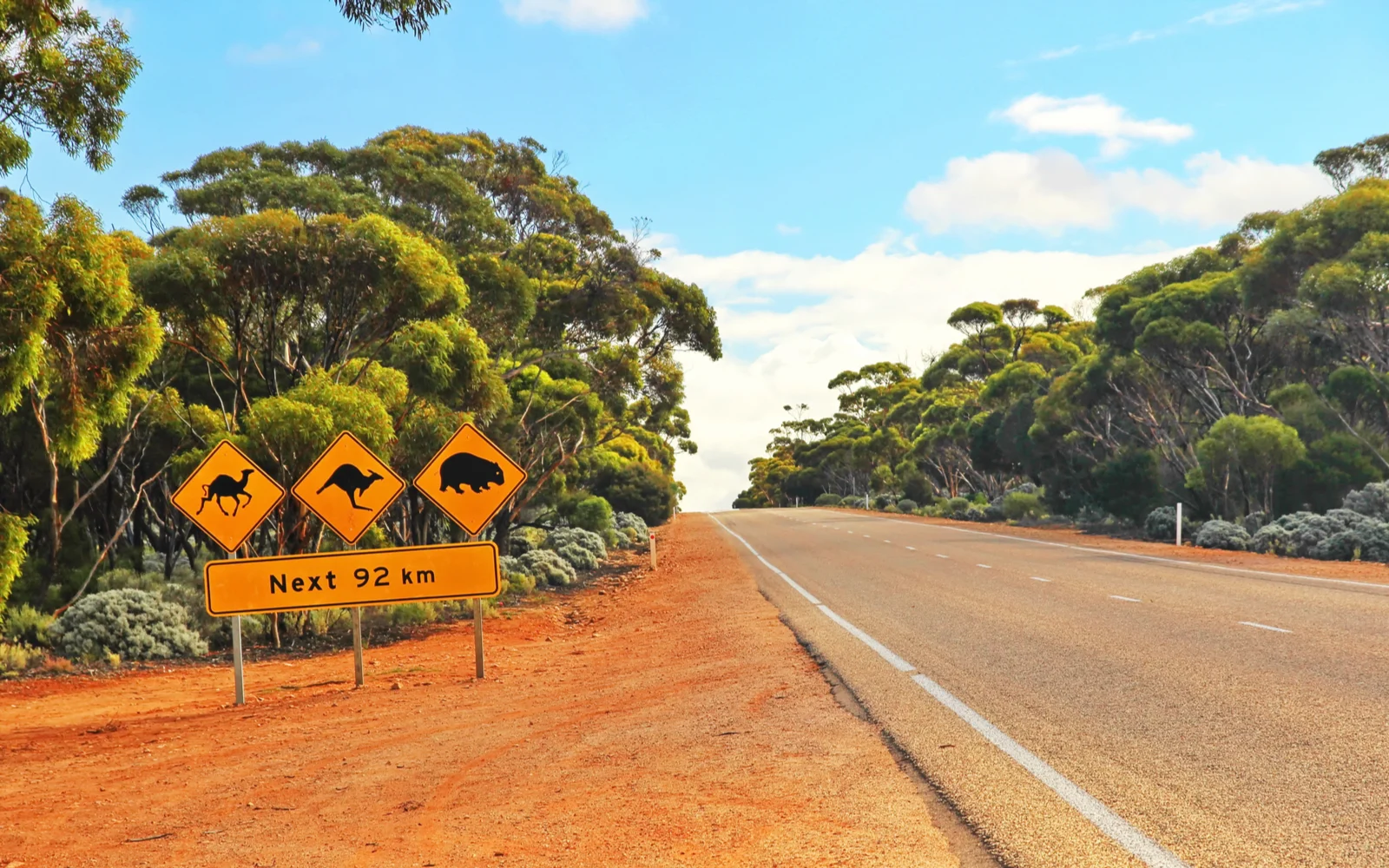What's the best time to visit Australia in 2025?
Australia is a sun-kissed land of contrasts, from the sparkling beaches of the Gold Coast to the cracked red deserts of the Outback. But what’s the best time to visit Australia to see Oz in all its glory?
With its diverse climate and landscapes, there’s a lot to consider when coming up with the perfect time to visit Australia. It’s a big continent!
We’ll show you the overall best, cheapest, least busy, and worst time to go with events and festivals you can look forward to in each season. Let’s start planning your trip!
The Best Time to Visit Australia
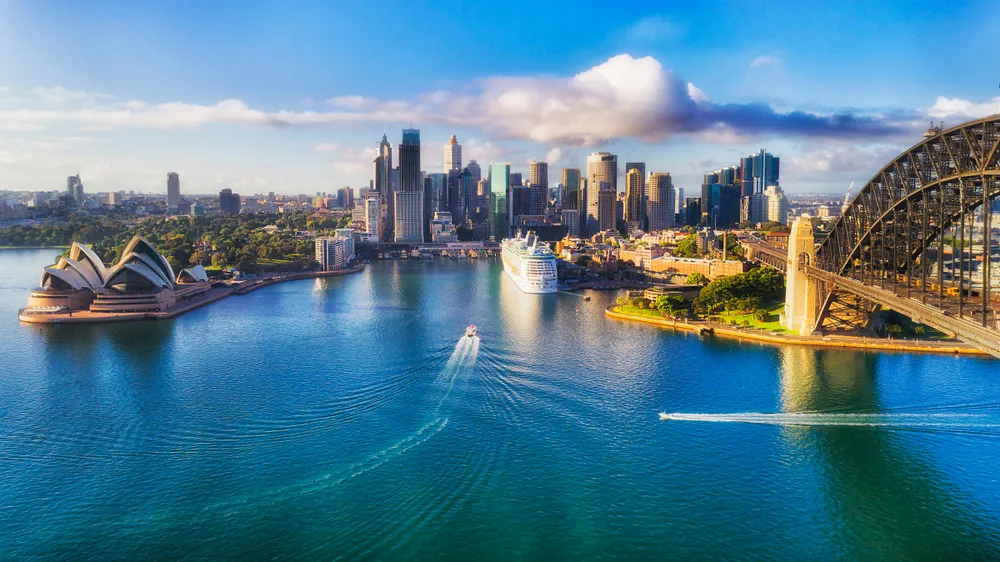
Taras Vyshnya/Shutterstock
The overall best time to visit Australia is in the fall from March to May. The fall shoulder season boasts mild temperatures, fewer crowds, and lower prices across the continent of Australia.
Narrowing down the right time to go within the fall season depends on what you’re looking for. Remember — seasons are backward in the southern hemisphere!
Fall in Australia varies quite a bit, but the months of March, April, and May see great weather that’s nice for outdoor recreation like swimming, hiking, and spending time on the beach.
March highs range from 74-86F, depending on the region, with lows around 55-74F. April is cooler, seeing highs from 67-84F and lows from 51-72F. May temperatures across Australia hang between 61-81F (highs) and 47-69F (lows).
Rainfall is minimal around Melbourne in the fall, but in Sydney, Brisbane, and Cairns, you can see anywhere from 3-14″ of rain each month!
March, April, and May are some of the least busy times to visit Australia and may be particularly nice if you’re hoping to avoid crowds. But there are some fun events this time of year you can plan to attend!
- Sydney Mardi Gras (late Feb. to early March) is an LGBT festival in true Mardi Gras fashion with parades and marches, tons of booths, live music and dancing, and all things rainbow.
- Adelaide Festival of Arts (early to mid-March) is a huge celebration of all things creative, with literature, opera, dance, music, and visual art exhibits taking over Adelaide for a few weeks.
- Moomba Festival (mid-March) in Melbourne is packed with parades, water sport competitions, music and dance performances, and food and drinks galore.
- Formula 1 Australian Grand Prix (mid-March) in Melbourne is an international leg of the Formula 1 World Championship circuit and great fun for motor heads to attend.
- Byron Bay Bluesfest (early April) in New South Wales is a must for blues lovers, drawing thousands to this 5-day fest filled with live music acts, food stands, drinks, and booths.
- Parrtjima (early to mid-April) celebrates Aboriginal culture in Alice Springs with traditional music, dance, cultural Q&As, and interactive workshops.
- Anzac Day (April 25) is celebrated across Australia to honor the country’s military service members who made the ultimate sacrifice. Parades, vigils, and services are held across the continent.
- Melbourne International Comedy Festival (early April) lights up comedy clubs and bars throughout Melbourne for the first 3 weeks of April with comedians from well-known to local up-and-comers.
- Ultra Australia (mid-April) is one of the biggest multi-genre music festivals in Oz with hugely famous musical acts and a palpable energy that attracts thousands each year.
- Sydney Comedy Festival (late April to May) is Sydney’s long-running comedy festival with tons of big-name and local acts at venues around Sydney.
Ready to Book?
Unlock Exclusive Discounts on Expedia.com!
Got Travel Insurance?
Protect yourself for unexpected interruptions.
Compare Plans We may be compensated when you book after clicking on one of our links.Cheapest Time to Visit Australia
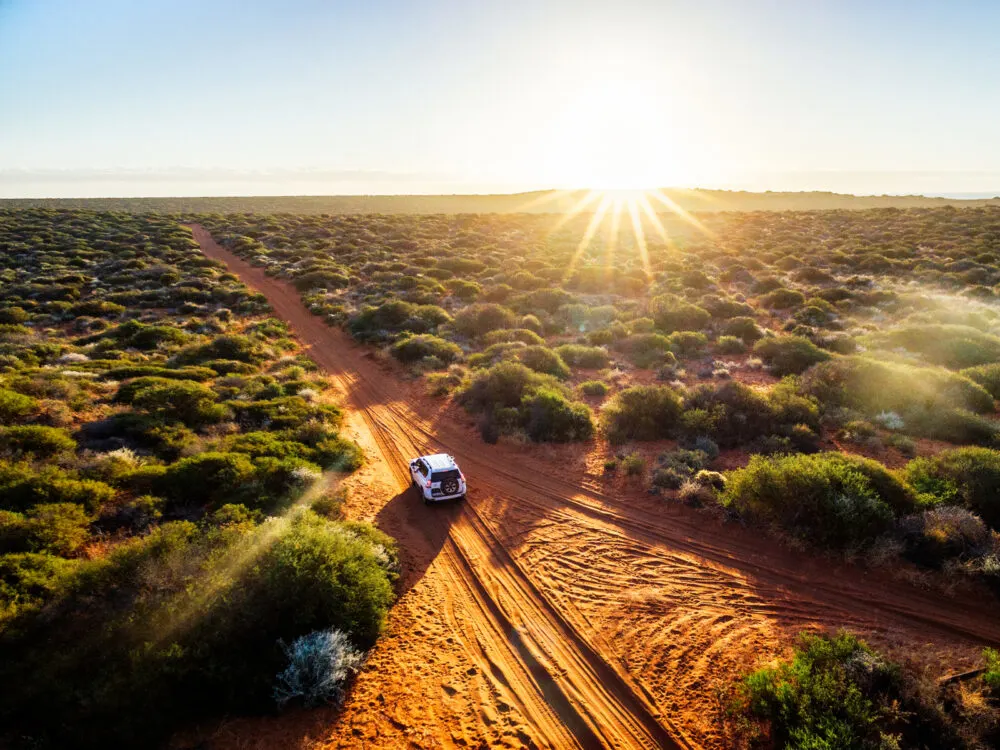
Iacomino FRiMAGES/Shutterstock
The cheapest time to visit Australia is between February and April when summer gives way to fall weather. February to April is when you’ll find lower prices on airfare, hotels, rental cars, and activities across Australia as summer visitors go home and prices drop as result.
February, March, and April are quite rainy in some parts of Australia (especially in Cairns and Brisbane), but mild and pleasant across much of the continent.
You can expect daily highs anywhere from 78-87F (February), 74-86F (March), and 67-84F (April) with lows that dip as far as 51F in April as winter approaches.
So what’s the trade off? Australia gets the most rain of the year in Sydney, Brisbane, and Cairns between February and April (especially in February and March).
But in other areas, like Melbourne and Perth, the weather is pretty dry and welcoming this time of year. It’s all about where you’re headed! If you plan on visiting Australia during the cheapest time of year, you’ll find plenty of events and festivals to check out while you’re here.
We’ve listed some of March and April’s best events in the section above, but here are some great options for the month of February.
- Mona Foma (mid-to-late Feb.) takes places in two Tasmanian venues, Launceston and Hobart, and is organized by the Museum of Old and New Art to celebrate music, art, and culture.
- Adelaide Fringe (mid-Feb. to mid-March) is one of the biggest arts festivals here with everything from comedy shows and dance performances to live music and circus acts. You can even get on stage and perform!
- Sydney Mardi Gras (late Feb. to early March) is Sydney’s annual LGBT festival complete with parades, live music and dancing, colorful costumes, and lots of celebration of self-expression.
Additionally, because there are fewer tourists during these periods, you’ll have more space to explore the country’s stunning natural landscapes and bustling cities. To score the best deals, book your trip well in advance and be flexible with your travel dates.
Least Busy Time to Visit Australia
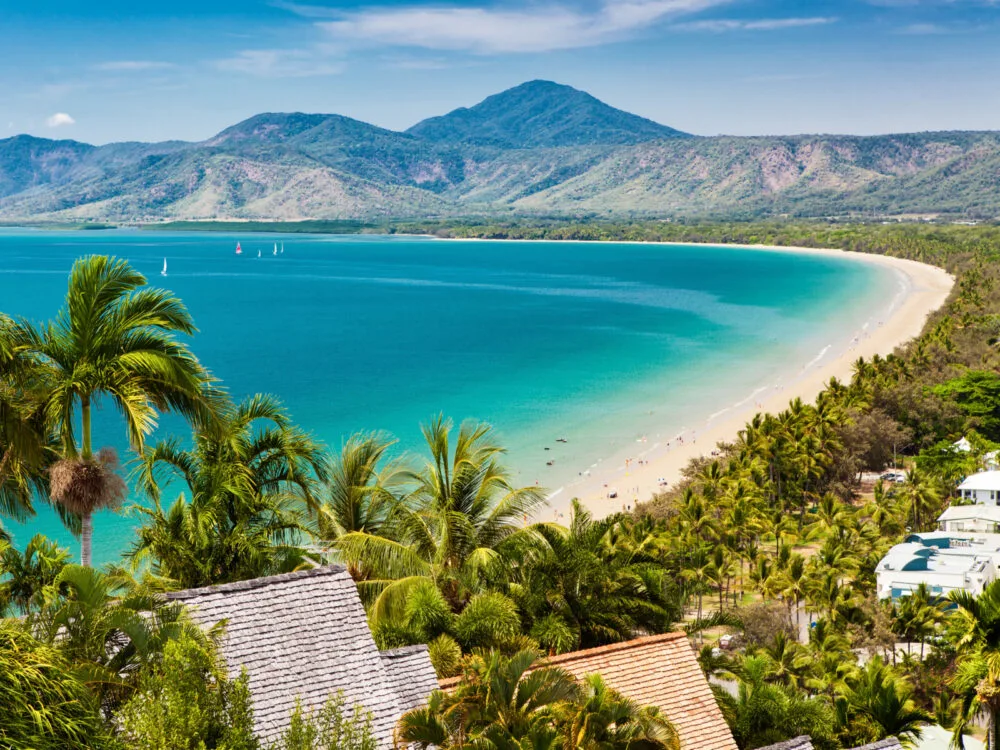
Martin Valigursky/Shutterstock
The least busy time to visit Australia is between May and August when fall dissolves into the chillier winter season and tourism drops.
May is the tail-end of the fall season in Australia before the winter months of June, July, and August officially take hold. It’s a quiet time for tourism across the continent. It’s also a great time to find some of the cheapest rates on flights and accommodations.
So why is this part of Australia’s less-busy low season? It’s chillier (but not cold), rainy in some regions, and many tourist attractions and restaurants are closed for the season.
But Australia doesn’t get very cold, so winter is far from gloomy or boring here. Temperatures vary by month during this time, steadily dropping with a slow rise at the end of winter. Highs reach 61-81F (May), 56-78F (June), 55-77F (July), and 57-79F (August).
Lows are another story, dipping as low as 44F in July and August in Melbourne. Temperatures hover in the 50-65F range through most of Australia all during the winter.
While you’ll see some rainfall throughout Australia during the late fall and winter, it’s not the wettest part of the year by any stretch. Rain totals range from just 1.2″/month (Cairns in August) to 4.6″/month (Perth in July).
It’s pretty dry across Melbourne, Sydney, and Brisbane this time of year. You’ll find that this is an excellent time to visit the Great Barrier Reef. The water is calm and clear in the winter, plus you’ll see whales and dolphins as they migrate along the coast!
If you’re looking for fun things to get into between May and August in Australia, there are plenty of options to check out!
- Vivid Sydney Winter Festival (late May to mid-June) is a 3-week celebration in Sydney of the winter season with dazzling light displays and projections, night markets, concerts, dancing, and street performances.
- Noosa Eat & Drink Festival (late May to early June) is a foodie festival with all things yummy in Noosa, bringing together cooking demonstrations and classes, tasty samples and sips, and live music and entertainment.
- Sydney Film Festival (mid-June) is a cinema lover’s hotspot in Sydney’s State Theatre and venues across the city over a period of 12 days. See world premiers of local and international films.
- Splendour In The Grass (late July) is an Australian music festival in New South Wales and other areas with back-to-back music acts and entertainment.
- Melbourne International Film Festival (late July to early August) is packed with film releases at different venues around Melbourne from local to international across genres for cinephiles.
- Henley-on-Todd Regatta (late August) in Alice Springs is a wild and entertaining race in hilariously slapdash homemade boats that travel down a dry riverbed.
If avoiding crowds is your top priority for a trip to Australia, note that you will run into larger groups if you attend any of these events. But for the entertainment, food, and drink options, you might decide it’s well worth it!
Worst Time to Visit Australia
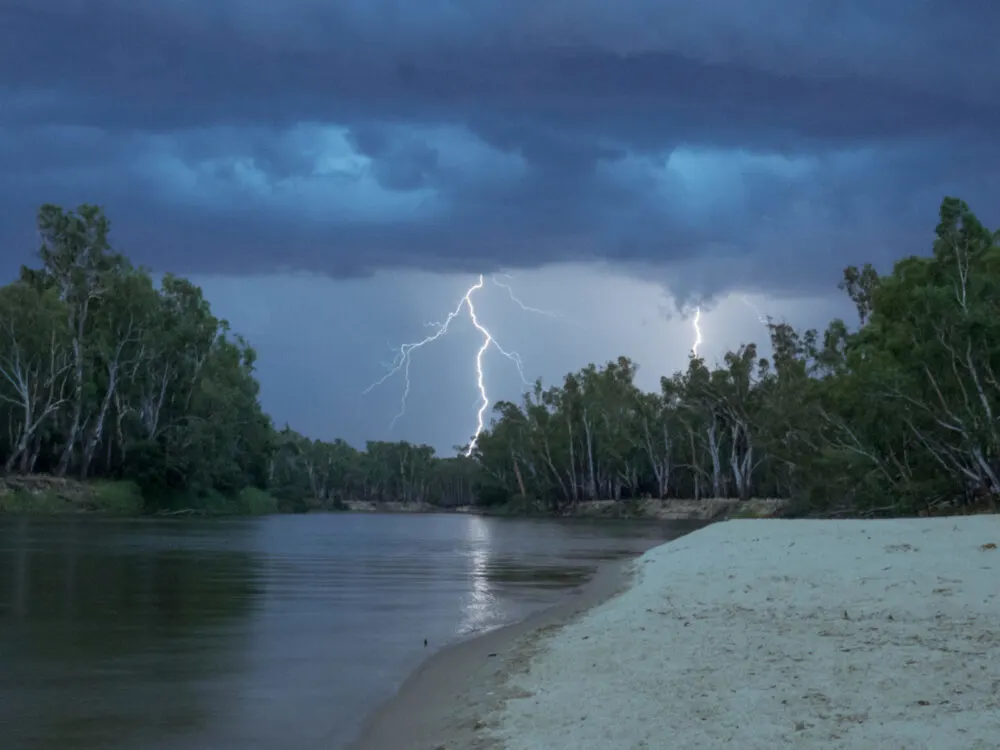
Steven J Scott/Shutterstock
The worst time to visit Australia is during the summer between December and February. During this time, nearly all of the country experiences extreme heat and intense humidity. It gets unbearably hot and muggy in some parts of Australia in the summer.
December’s highs (74-87F) are just a warmup to January and February (78-88F). Humidity is at its highest, especially in Cairns (99%) and Brisbane (68%).
Lows don’t go below 55F this time of year, but in many regions, summer lows are closer to 60-70F. And it’s not just the weather that makes this the worst time to visit Australia. Hotel, attractions, and flight prices are at their highest during the summer.
But if you do decide to visit Australia in the summer, there are tons of festivities and events happening that can take your mind off the heat.
- Sydney-to-Hobart Yacht Race (late December) is fun to watch as 100+ spinnaker yachts depart Sydney Harbour en masse for a heart-pumping race to the finish.
- Woodford Folk Festival (late December to New Year’s Day) takes place just north of Queensland with 2,000+ performers at over 30 venues nearby for music, dance, art, and cultural acts.
- New Year’s Eve (December 31) is celebrated throughout Australia, but the biggest is in Sydney as the Harbour Bridge is illuminated by a dazzling fireworks display with people partying all night on the shore.
- Sydney Festival (early January) is a performing arts festival with lots of classical and jazz music from over 1,000 artists at 20 different venues in the city.
- The Australian Open (late January) at Melbourne Park National Tennis Centre is perfect for tennis lovers who want to see the greatest players go head to head.
- Australia Day (January 26) celebrates Australia’s history when the first convicts landed at Sydney Cove in the late 1700s. Food, drink, games, races, and fireworks are always part of the fun!
If you’re up for a bit of adventure and don’t mind sweating buckets under the hot Australian sun, the summer season isn’t all bad. But remember to prepare accordingly – stay hydrated and make sure you have access to plenty of cool showers or dips in the pool to stay comfortable.
Australia by Month: Climate & Activities
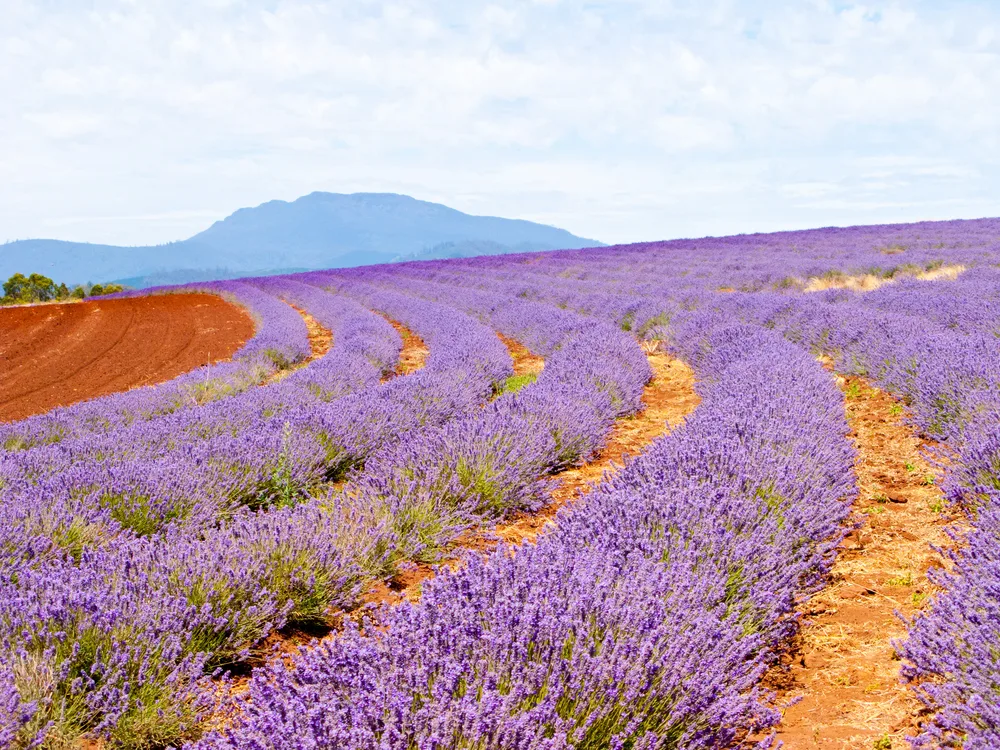
Ian Woolcock/Shutterstock
Here’s a summary of the climate and popular activities in Australia by month:
January
During the scorching Australian summer, temperatures soar, averaging around 86-104°F. Residents and tourists flock to the beaches for relief, enjoying water activities and festive events. However, bushfire awareness remains high, especially in the southern regions.
February
Similar to January, February experiences hot temperatures, with averages ranging from 77-95°F. Coastal areas attract crowds for water sports, while the north braces for the tail end of the cyclone season. Southern regions remain vigilant against bushfires.
March
As autumn begins, temperatures cool slightly, ranging from 50-77°F. Outdoor activities include hiking and exploring national parks, while some southern areas may still be clearing up after bushfire events. The north experiences a transition from wet to dry season.
April
Autumn brings milder temperatures, averaging 50-68°F. It’s an ideal time for outdoor events, and southern regions start to recover from bushfire impacts. The north experiences a shift to drier conditions.
May
Cooler temperatures, averaging 41-59°F, make May perfect for exploring regional wineries and enjoying outdoor markets. In the north, the dry season solidifies, offering great conditions for camping and nature adventures.
June
Winter arrives with temperatures ranging from 41-59°F. Winter sports enthusiasts head to the southern regions for skiing, while the north enjoys clear skies and mild weather, ideal for outdoor activities.
July
Winter conditions persist, with temperatures similar to June. The south may experience frosty mornings, attracting winter sports enthusiasts, while the north enjoys the dry season with clear skies for hiking and exploring.
August
Temperatures remain cool, averaging 41-59°F in the south. It’s an excellent time for whale watching along the southern coasts, while the north starts to see a transition from the dry season to warmer, more humid weather.
September
Spring brings a temperature rise, averaging 59-77°F. It’s a perfect time for flower festivals and outdoor events, and the north sees an increase in humidity as the wet season approaches.
October
Warmer temperatures, averaging 68-86°F, make October ideal for outdoor adventures and beach activities. Southern regions may experience thunderstorms, and the north anticipates the onset of the wet season.
November
Late spring sees rising temperatures, averaging 77-95°F, making it perfect for beachgoers and water sports enthusiasts. The north experiences the peak of the wet season, attracting those interested in tropical landscapes.
December
Summer officially begins with temperatures soaring between 86-104°F. Beaches are popular for water activities, and the north experiences heavy rainfall. Southern regions face an increased risk of bushfires amidst the summer heat.
Things to Consider
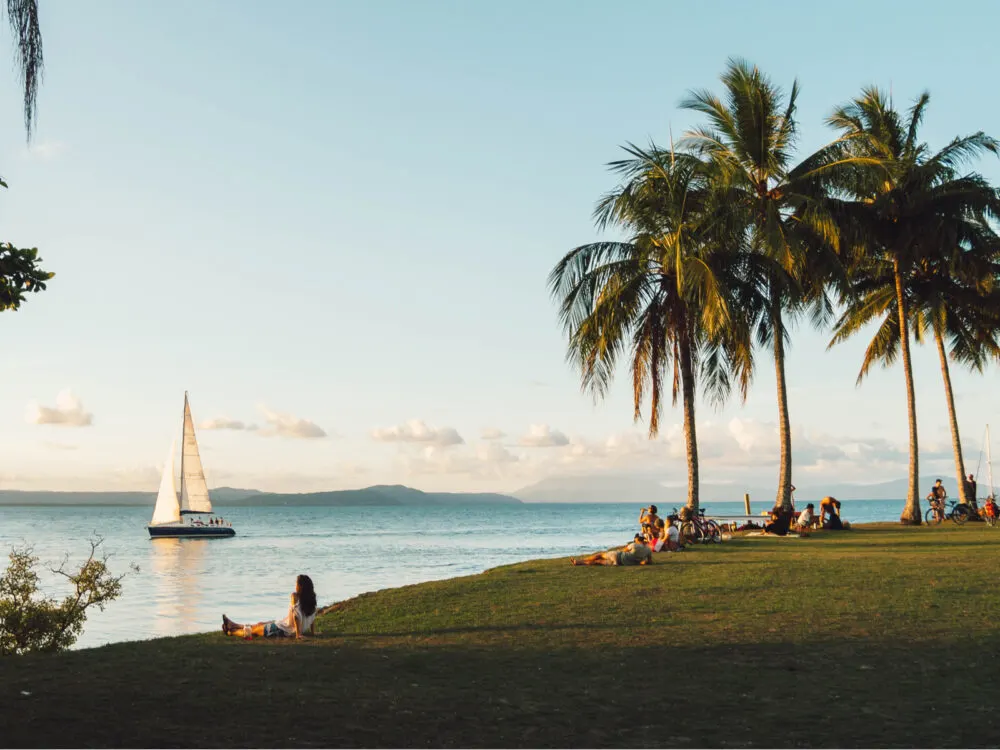
Kompasskind.de/Shutterstock
Here are some thing to consider to ensure you book your trip during the absolute best time to visit Australia:
- Nail down which region you’re visiting. Australia is huge! If you’re not sure which part of Australia to visit, the West Coast is the hottest (especially the Northwest). It’s wetter on the Northeast coast around Cairns, where it gets up to 16″ of rain in the month of February alone! Take a look at our best recommendations on where to stay in Australia to learn more.
- Pack for the seasonal weather. It could be chilly, hot and humid, mild and drizzly, or raining buckets depending on the time of year you visit and which region you’re going to. Be sure to pack appropriately for the season, whether that’s lugging an umbrella and rain jacket or lightweight layers with plenty of sunscreen.
- Know how much it’ll cost to visit. If you’re not sure what a trip to Australia costs, plan on around $5,500 per person for a 7-day trip to one of the country’s major cities. Your flights will be the biggest expense, followed by your hotel and daily costs like food, drinks, and activities.
- Check your passport and visa. Everyone needs a valid passport and tourist visa to enter Australia. Make sure you have these documents in hand (and not expired!) before it’s time to book your trip. Your visa allows you to stay up to 90 days.
So, What’s the Best Time to Visit Australia?
| 👍 Best Time to Visit | March to May |
| 💲 Cheapest Time to Visit | February and April |
| 🗓️ Least Busy Time to Visit | May to August |
| 👎 Worst Time to Visit | December to February |
The best time to visit Australia is between March and May for mild, comfortable weather without the large crowds and high prices of peak summer season.
But no matter when you decide to head down to Oz, you’ll appreciate the chance to explore all that the beautiful country of Australia has to offer!



